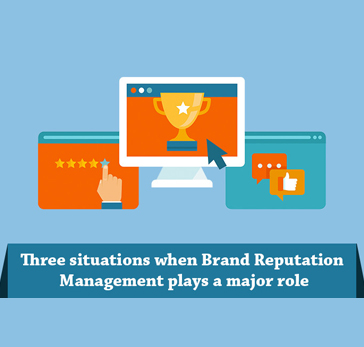- Mergers and Acquisitions
- Multi-channel online presence
- Managing Stakeholder equations – other than with customers
Merger/Acquisitions:
There are any number of instances where partnerships between 2 entities have not taken off, if not failed, post an M&A. One of the most common reasons for this would be lack of a proactive brand reputation management effort from the merged entity. When 2 entities merge, business is anything but “as Usual”. What therefore needs attention –
- Define and develop a robust and well strategized brand architecture well in advance, as the 2 entities could both have multiple product brands and/or corporate Brands as well. The better defined the brand architecture strategy, the more likely to effectively leverage the combined brand assets and less likely that there will be dilution in desired brand value Here Corporate branding and product branding both play key roles. Procter and Gamble is a great example of a powerful Company Brand but with multiple product brands organic and acquired. This architecture makes it easy to merge in new product brands. Another example of how Merged Brands have been well articulated are the Tata brands having combination of Corporate and Product Brands as in Tata motors, Tata Tetley, Tata Steel, Tata Salt, Tata Sky and multiple other products and product groups.
- Systems and Processes should be merged through effective transition to the desired brand image. There has to be a conscious effort to leverage on the strengths of both entities and more importantly let go some of the not so good practices of the previous individual entity culture. For this to happen would involve Strategic vision, a Customer Centric approach, extensive Internal branding with a drive to erase old practices.
- Organisations need to identify brand champions from both the entities who are open minded and flexible to changes otherwise the new company risks losing its customers if management is perceived as indifferent and impervious to customer needs. High level of maturity to put personal branding and job security behind desired brand image is essential to qualify them as brand champions who should own and implement the post-integration milestones step by step. They also need to be attuned to the target company’s branding expectations and customer base.
- Customer’s perceptions and expectations may have been different in both the entities and to transition into a merged perception would sometimes need a step by step phased out strategy depending on the desired brand architecture. Afterall, brand reputation is a matter of perception and perception management needs unique skills and diverse cross functional experience to be able to appreciate the other side of the tables. Cultural fit management with customers is also a challenge boos perception to a large extent are emotion driven. So , brand-as-a-persona approach is needed besides brand as an organization approach .For this Internal training of the distribution channels becomes an important factor in order to build confidence with customers that the new organization will be able to provide a customer experience at least as good as the individual entities provided earlier .What can make things even more complex is when acquired Company brand is more powerful than acquiring Company brand !
Multi – Channel Online presence.
Social media is a powerful tool to create a viral marketing platform for brands through positive brand feedback and build Online brand reputation. Needless to mention, it is also a rather convenient platform for disgruntled customers to voice frustrations that can put a brand’s reputation at great risk. What therefore needs attention –
* * Brand Communication Channels should be carefully picked to target the correct consumer segment otherwise the cost of managing online presence will be nonvalue added and more susceptible to risk that can be done without. That done, brand communication has to be consistent across every online channel in order to build credibility as a trusted and preferred supplier. These channels should be effectively used to engage with customers and respond quickly both for positive and negative feedback. We talked in an earlier article about how FedEx reacted most appropriately to a negative video on Social media. Domino’s on the other hand is said to have taken too long to react to a negative comment by which time lot of damage had already been done on Social media.
** Use Media monitoring tools to analyse perceptions, preferences and loyalty factors and work brand strategy around that in order to strengthen brand reputation and stay ahead in the competitive landscape
Managing Stakeholder equations – other than with customers:
Any brand would have to have multiple associations across stakeholders other than just the customers. The way these relationships are managed define the brand’s reputation to a large extent, even with the customers for that matter. Today, Corporate Governance and Corporate Social responsibility play significant roles in a Business’ Brand reputation Management. What therefore needs attention –
# Adequate attention should be paid to Ethical standards of Board performance, Commitment to Environment, Health and Safety and also Corporate social responsibility. These are important indicators of a Brand’s reputation and Brands can ill afford to allow these factors to get second priority over Business. In fact, these are important criteria that build a long-term sustainable Brand value in the perceptions of Stakeholders
# Budgets for EHS and CSR should not be compromised even though customers may not be ready to pay higher prices for these investments in a short term. However, it is an intangible investment whose results will start to repay benefits of Brand equity in the long term.
But, of all, the most important brand drivers for every organization is outgoing employees. They can be one of the most effective ambassadors for the brand and hence organizations should treat them well, not just when they are around but also when they choose to exit. Collectively, they could even influence potential partnerships.





1 Comment
I’m extremely impressed with your writing skills as well as with the layout on your blog.
Is this a paid theme or did you customize it yourself?
Anyway keep up the excellent quality writing, it’s rare to see
a nice blog like this one today.
Take a look at my page … RoyalCBD.com